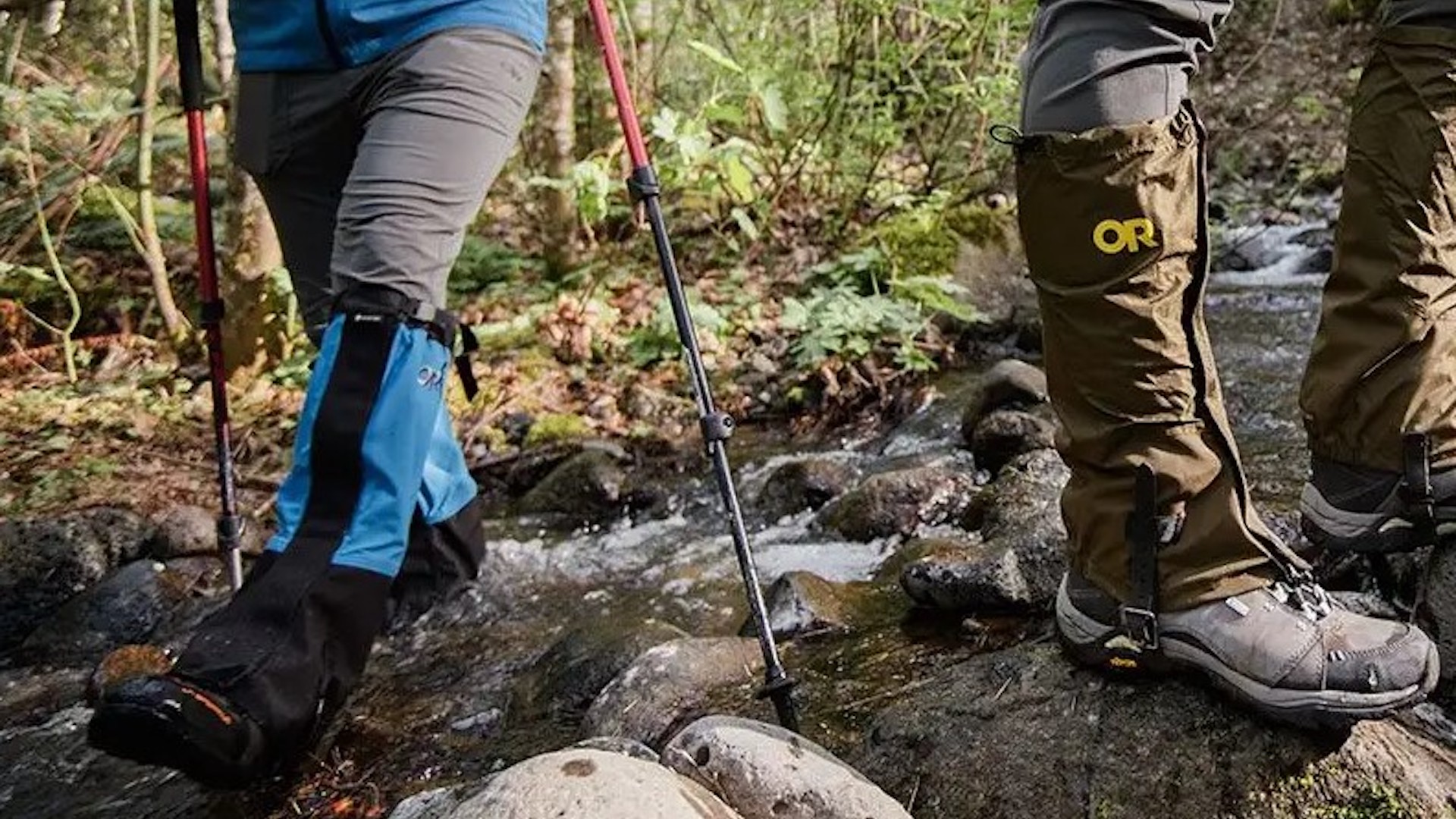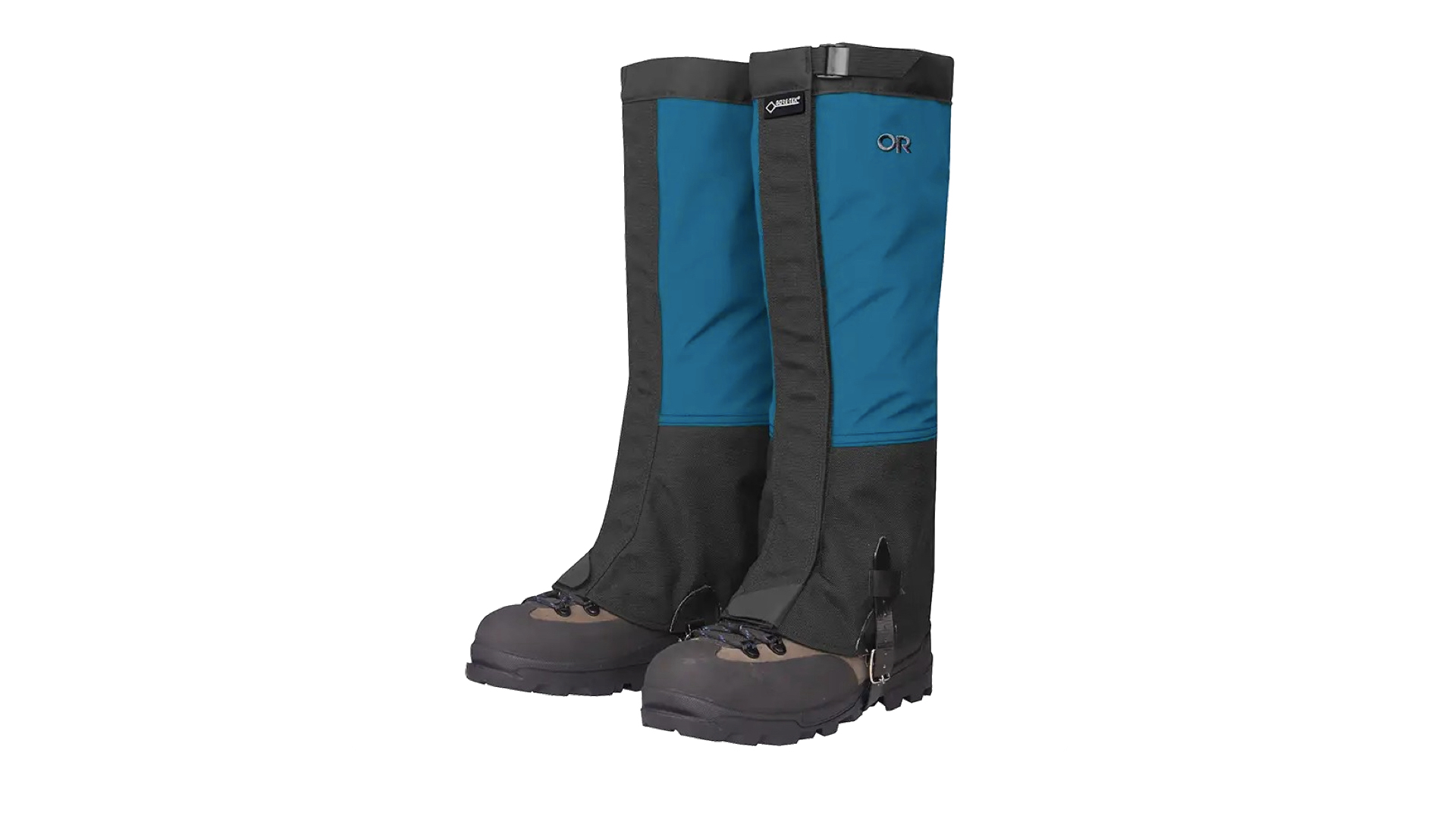Advnture Verdict
These are rugged, well-made gaiters that employ heavy-duty fabrics and a three-layer Gore-Tex construction. The result is reliable waterproofing, a high level of all-round protection and excellent lifetime durability.
Pros
- +
Durable and robust fabrics
- +
Reliable 3L Gore-Tex waterproofing and breathability
- +
Wide range of sizes
Cons
- -
Some users have reported snapped buckle tongues
- -
Not the lightest or most breathable
You can trust Advnture
Outdoor Research Crocodile Gore-Tex gaiters: first impressions
Outdoor Research Crocodiles are gaiters with some serious pedigree, and some of the best gaiters. around. The US brand has been manufacturing gaiters for hiking and mountaineering since the early 1980s. In fact, they were the US company’s first ever product. Brand founder Ron Gregg developed his own design after witnessing his climbing partner suffering from extreme frostbite on Alaska’s notorious Denali, which was partly caused by poorly fitting gaiters. Snow had been pushed between his friend’s gaiter and boot, resulting in frozen feet and an emergency airlift to safety for urgent medical attention. With that kind of chastening experience to draw upon, it’s no surprise that OR’s gaiters are serious bits of kit.
The Crocodiles are a case in point. Something of a modern classic, the basic design has been around for years and is now widely regarded as the benchmark outdoor gaiter. Extending to just below the knee, and available in a wide range of fits including dedicated women’s sizes, they provide full coverage and protection as well as a fairly close, snug fit that effectively fends off snow, moisture and trail debris.
In terms of construction, they feature a 70-denier plain weave nylon upper panel backed with a three-layer Gore-Tex waterproof-breathable membrane. The lower section, which is the area that is likely to take most punishment, employs abrasion-resistant Cordura nylon, a 1,000-denier woven packcloth. The instep strap is made from durable BioThane – basically, a TPU-coated polyester webbing that feels seriously tough. Other elements are just as rugged, with a front closure that consists of a wide strip of double-stitched Velcro, with a secondary bottom flap. There’s also a double riveted metal lace hook here to ensure a secure fit to your hiking boots. Lastly, the top of the gaiter can be adjusted to fit your calf via a plastic buckle and webbing strap.
• RRP: $89 (US) / £65 (UK)
• Weight (per pair): 289g / 10.2oz
• Length: Long
• Sizes: S / M / L / XL / XXL
• Colors: Black / Chilli / Cascade / Ochre
Outdoor Research Crocodile Gore-Tex gaiters: on the trails
On test, these Outdoor Research Crocodile gaiters proved to be reliable performers. We trudged through mud, bog and all sorts of other muck, and our boots stayed dry throughout. Since they’re designed as an all-season gaiter, we’d be equally happy to trust them in snow, slush and talus when winter rolls around. The wide range of sizes means that it’s possible to get a pretty neat fit on all but the slimmest of calves, and OR’s helpful size guide makes it much easier to know which size ought to suit you.

The heavy-duty build means these aren’t the lightest gaiters around, but that’s the price for increased protection and longer life. Similarly, although the Gore-Tex lining does its job, we can’t guarantee that when working hard, your lower legs won’t start to feel a little clammy. Again, it’s a trade off for the robust and rugged fabric used, which does a great job of dealing with all sorts of trail debris and undergrowth.
Our pair have endured some serious abuse without causing us any concern – though we did note that some other reviewers have commented on fragile buckle tongues, which snapped after just a few outings. This may be a quality control issue that affects specific batches only, so it’s worth inspecting this component closely on purchase. However, it’s also possible that the problem is user error, as it is important to ensure that the instep strap is fitted tightly around the boot, so the buckle tongue does not protrude in use. If it isn’t firmly secured, we can easily see how it might catch and snap.
An outdoors writer and editor, Matt Jones has been testing kit in the field for nearly a decade. Having worked for both the Ramblers and the Scouts, he knows one or two things about walking and camping, and loves all things adventure, particularly long-distance backpacking, wild camping and climbing mountains – especially in Wales. He’s based in Snowdonia and last year thru-hiked the Cambrian Way, which runs for 298 miles from Cardiff to Conwy, with a total ascent of 73,700 feet – that’s nearly 2½ times the height of Everest. Follow Matt on Instagram and Twitter.


